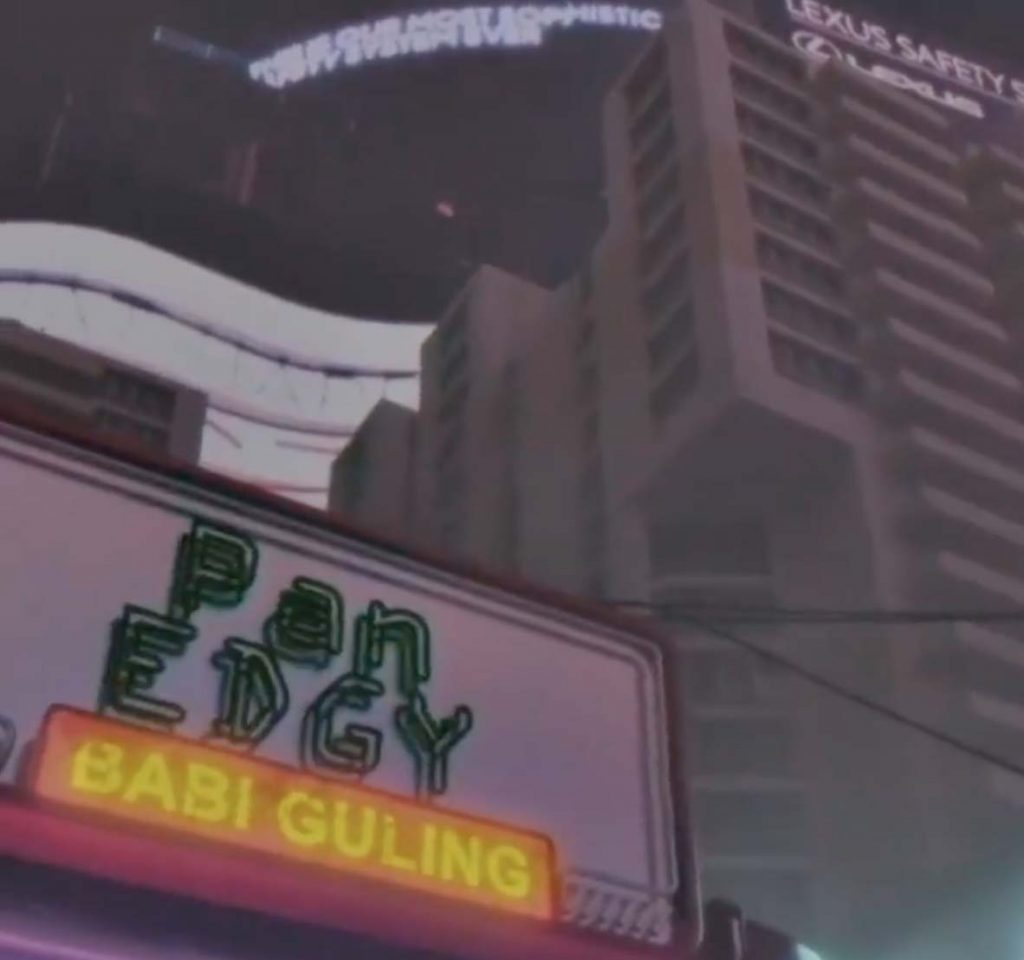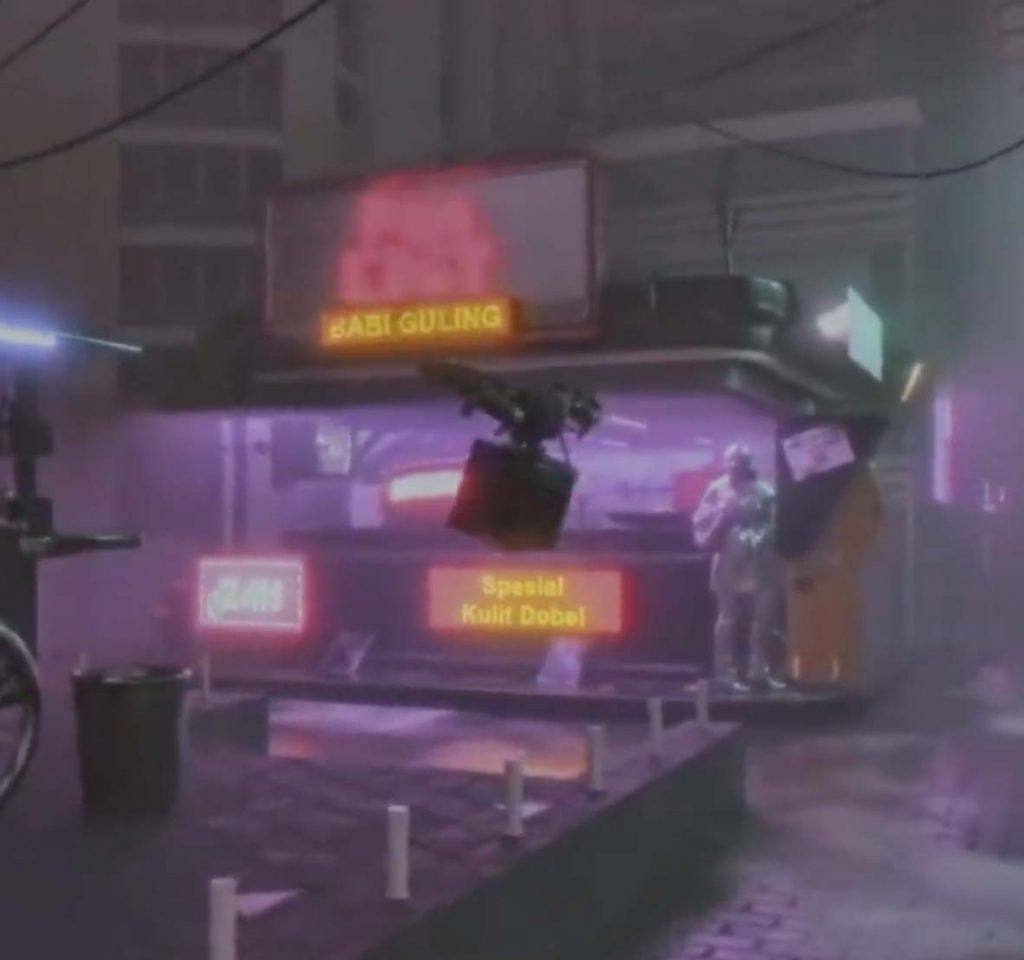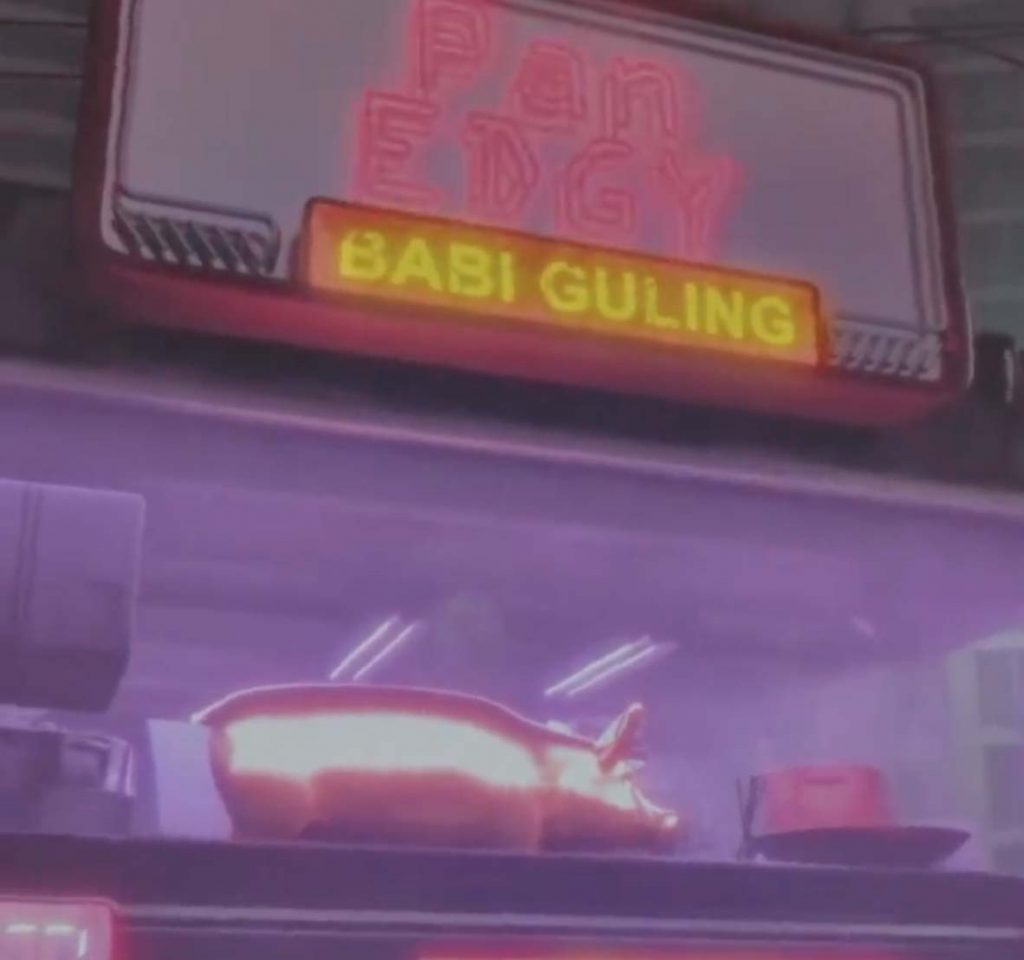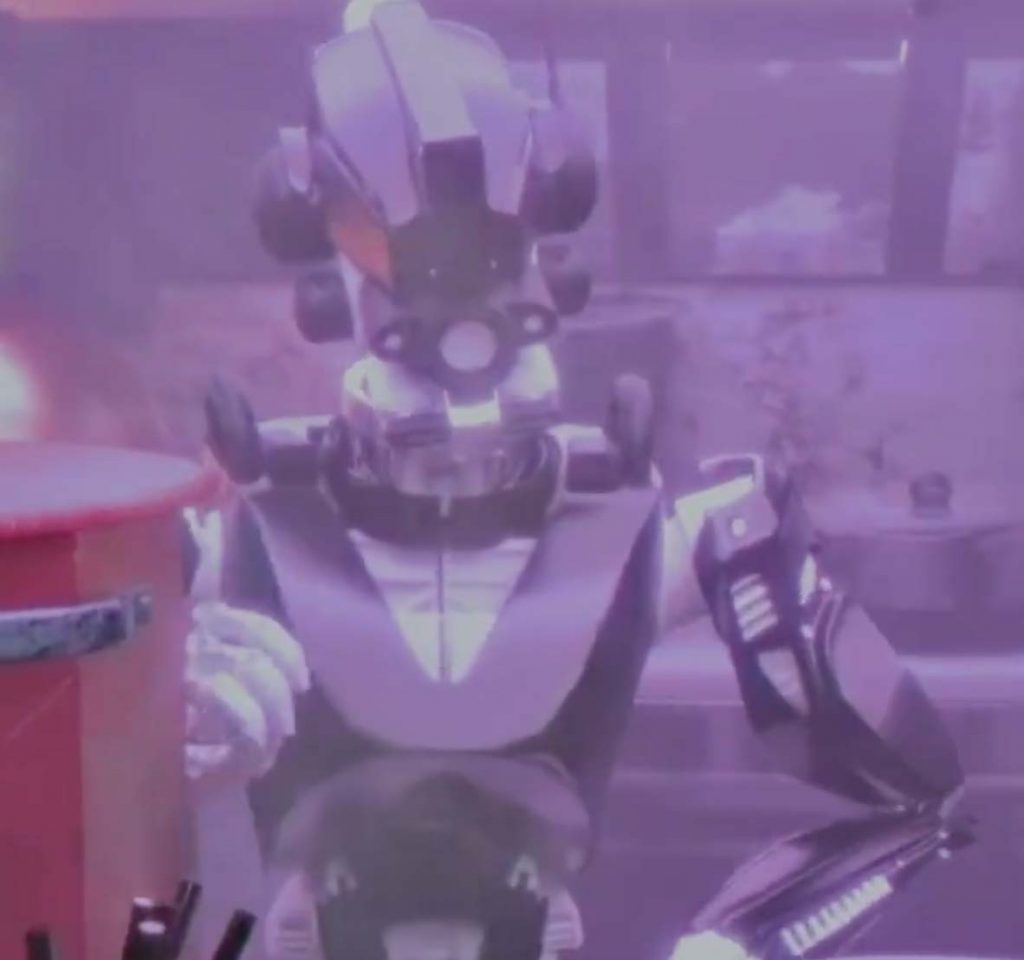‘Neo Denpasar’ is an NFT animation artwork describing the Denpasar market in the year 2077. In the futuristic nighttime scenario, the only cultural reference is emerging Balinese digital artist Aditya Parama, ‘Pan Edgy Babi Guling’, a suckling pig warung. Staffed by robots, the warung is patronised by humans with gleaming chrome skin. Drones fly throughout the dystopian scene, highlighted by violet hues, yellow neons and a distinct lack of soul.
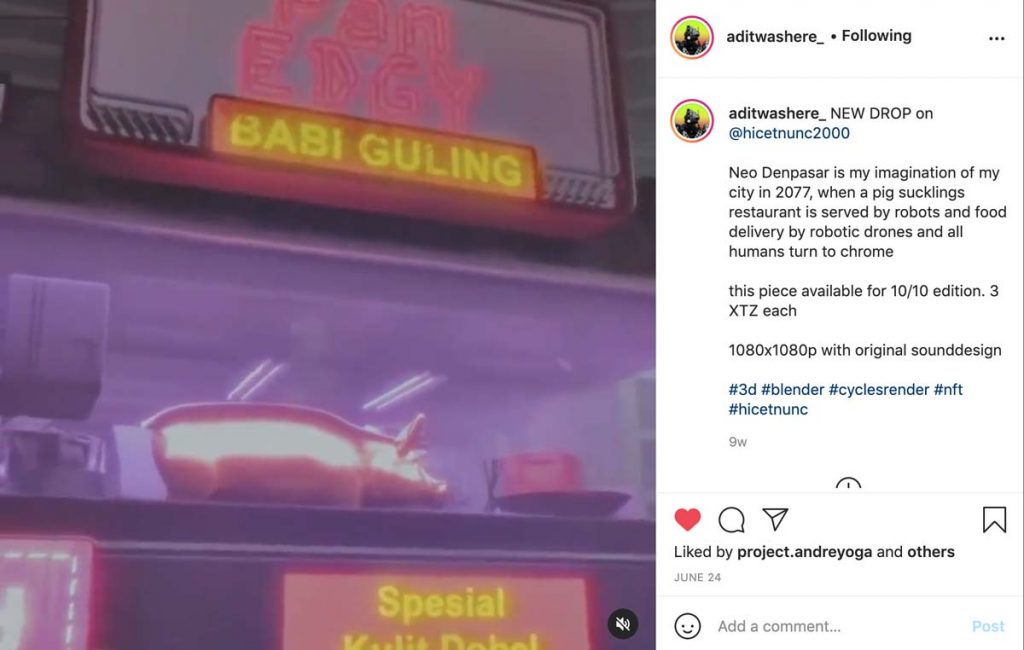
What are NFTs?
Digital technology is revolutionising contemporary art, and a new trend is spreading worldwide. However, aesthetic idiosyncrasies do not identify it. Yet, a phrase linked with the Blockchain where the art is traced and exchanged. NFT, a Non-Fungible Token, is a new digital asset, a JPEG, a GIF, or an MP4 animation file authenticated by the distributed ledger technology, certifying its originality and ownership. Hailed as a breakthrough for artists, the unique NFT smart contracts confirm who made the work and who currently owns it. Royalties are locked into the contract, with artists receiving 10 per cent in cryptocurrency payments each time the NFT is resold.
The recent highly publicised and hyped sale of NFTs by the leading international auctioneers, Christie’s and Sotheby’s, for enormous prices have now defined a new phenomenon of art investment. However, while NFTs allow new opportunities for artists and designers, the marketplace is founded on the old economic paradigm of the scarcity mindset and the boom and bust cycle. As a result, NFTs are attracting people who care not for art but mainly for profit.
“I have no manual skills of drawing and painting, my creativity developed within the design field. I became interested in graphic design at school as the technology I learned easily, and I perceived this as a career opportunity,” Aditya told me. “When the pandemic began, I was unsure what to do. I began following a collective of artists from Jakarta, IZZY, on the Internet who streamed information about 3-dimensional digital art. This offered me new insights, triggering my imagination to the possibility of fresh creative expressions. I became dedicated to understanding 3D animation from free open-source platforms.”
Why are NFTs relevant?
Digital art and NFTs have developed within an alternative sphere upon unique decentralised platforms allowing artists new freedoms. This is especially important because they do not have to enter the conventional, physical, tiered art world with its array of gatekeepers. The art industry has destroyed creativity, and the middlemen, the galleries and dealers, have exploited the artists.
“Digital art rarely enters the normal art world and is mostly focused upon design and advertising. NFTs exist in an exciting and rapidly evolving decentralised and democratic art world, which eliminates the middleman. Anybody can become an artist or collector,” Aditya explained. “I have learned by watching online and joining Indonesian and international communities. I, therefore, do not need to enter the conventional Bali and Indonesian art worlds.”
“I have minted (the process of uploading digital works onto blockchain platforms for sale) over fifteen NFTs and sold more than 10 works. I have sold one exclusive NFT on the ETH platform for 0.1ETH the equivalent of USD $300 and am making series of ten works. More than five of my series have sold out at the price of 3 Tezos, a cryptocurrency valued at about $5 for 1 Tezos. In addition, I have sold two NFTs on the secondary market and received royalties. The royalty mechanism is the advantage of NFTs over conventional art which exists in a domain rife with dishonest practices and at the highest tier is flushed with fake work.”
How are NFTs Functional?
The application of NFTs is limited. They are only functional in the Metaverse (the future, Internet of Internets, where participants exist within a 3D digital world of infinite possibilities and economic opportunities) and yet-to-be-built venues to display the NFTs in a large scale format for big audiences. Only recently have exhibitions in art galleries began to proliferate, displayed with monitors and projectors. “Many see NFTs as simply a cash grab. The technology is in its infancy, is unregulated, yet allows opportunities to create new artistic expressions and earn money,“ said Aditya who was born in Denpasar in 2000.
Is ‘Neo Denpasar’ possible?
“When you talk to a human in 2035, you’ll be talking to someone that’s a combination of biological and non-biological intelligence,” says American futurist and Google’s Director of Engineering Ray Kurzweil. “I have set the date 2045 for the ‘Singularity’ which is when we will multiply our effective intelligence a billion fold by merging with the intelligence we have created.” Kurzweil advocates that transhumanism, the merging of human biology with AI, is our only conceivable pathway forward. ‘Neo Denpasar’ reveals Aditya’s acute perception of Kurzweil’s dystopian vision.
With the gate to tourism closed, many Balinese creatives have had their market cut-off. The rapid development of the digital sphere has, however, created opportunities for many to access new markets and to reach new and old buyers. Like Aditya, young creatives without painting and drawing skills are honing their digital style to discover a distinct visual style. Aditya’s earlier works focused upon his cultural ideas of beauty. His recent works, however, consider culture and tourism and their possible future ramifications.
“I seek to create unique NFTs with references to Bali to provide an alternative for the crypto art market,” he stated. “I believe what is important is artists and creatives learning about new technologies and the growing array of opportunities available to them. Such as new expressive genres, reaching new audiences and securing alternative income streams.”

